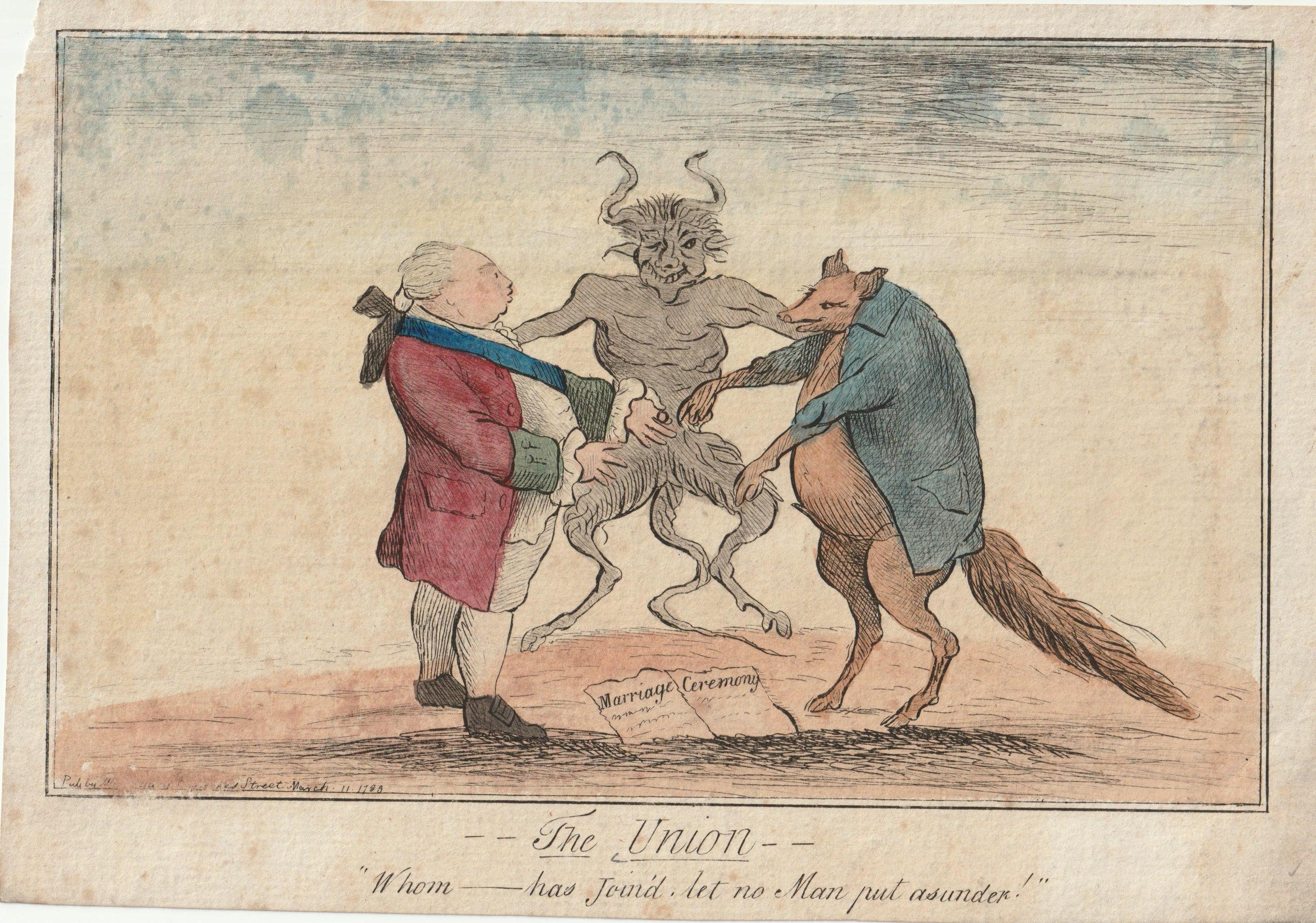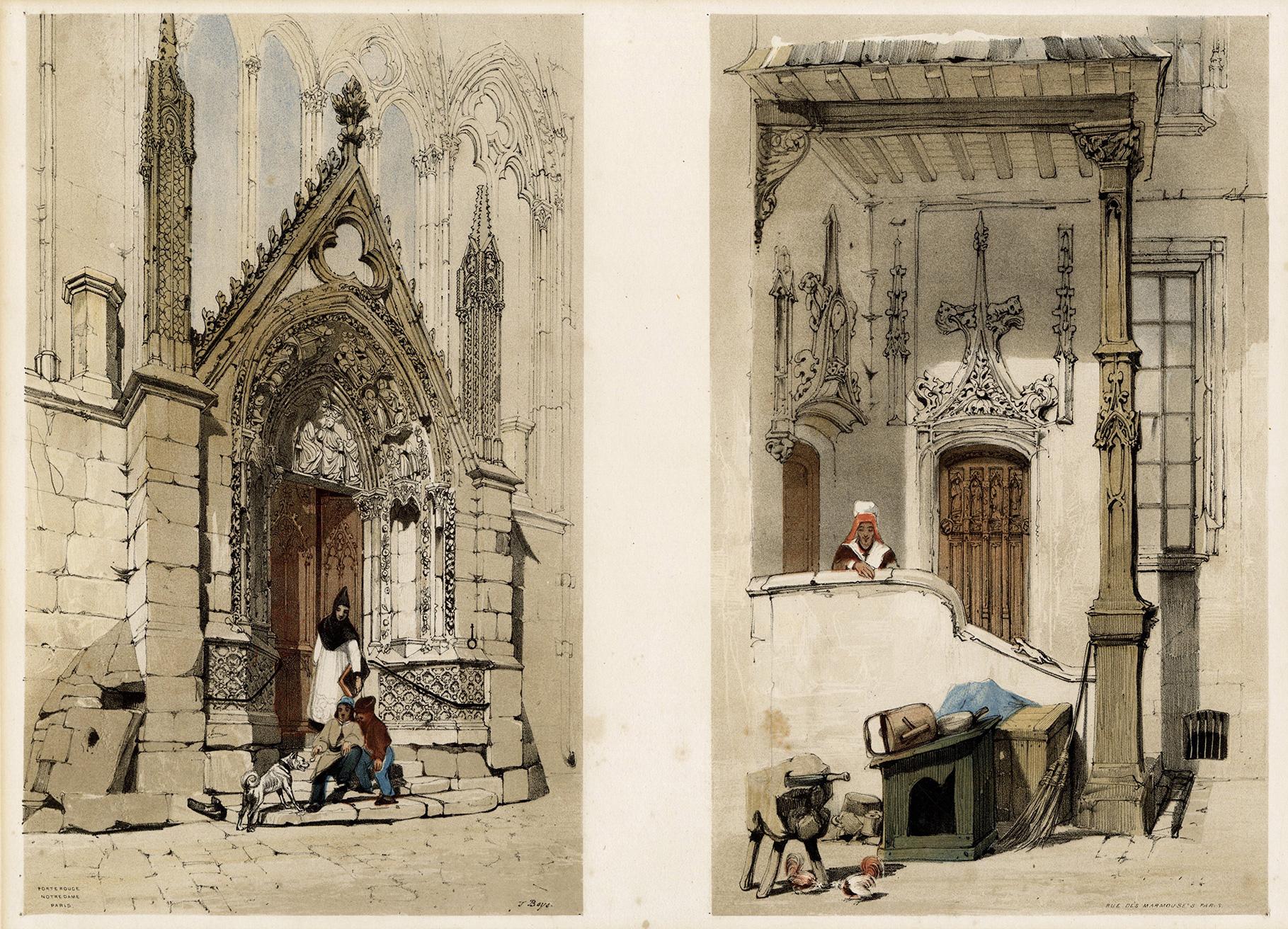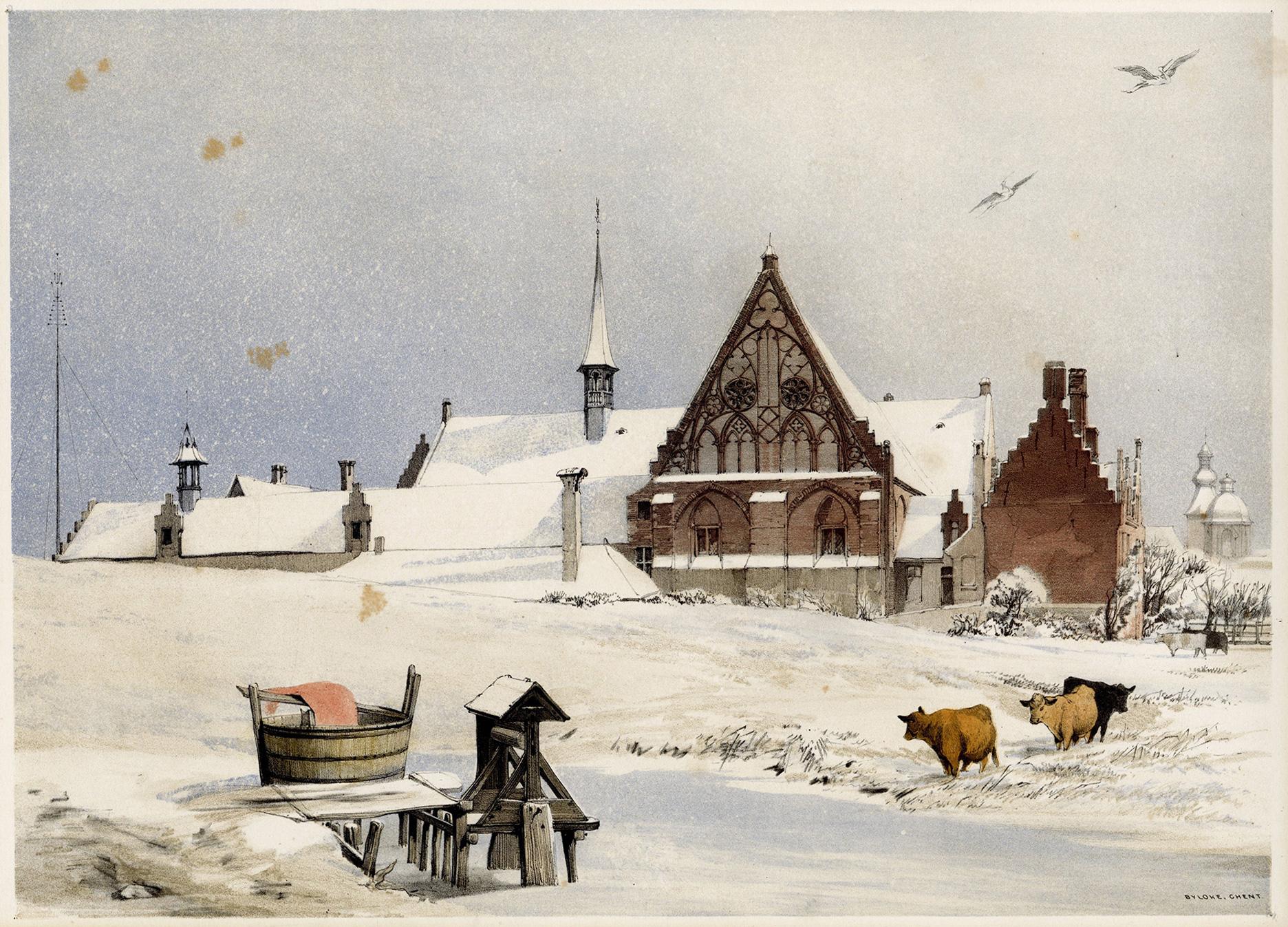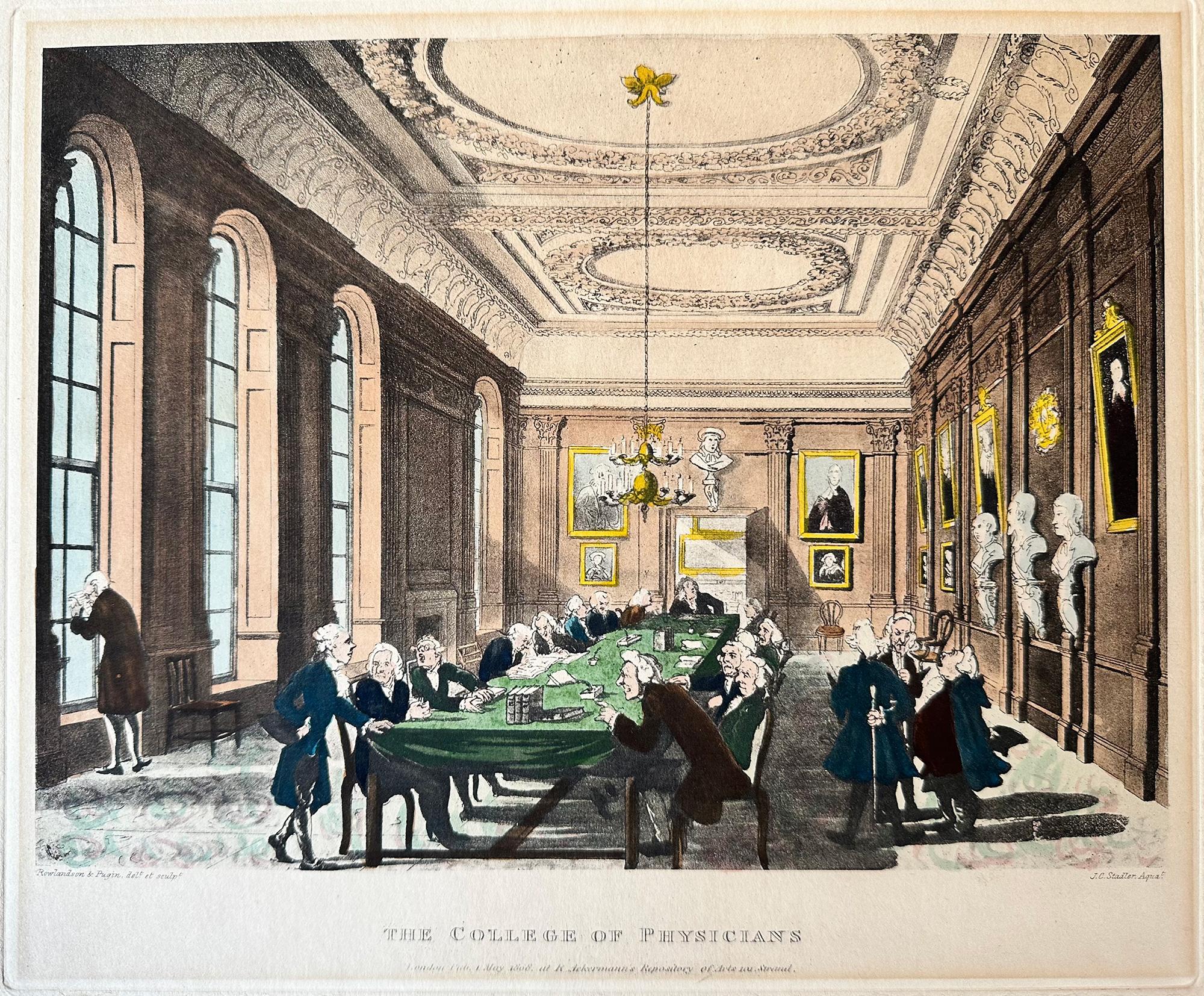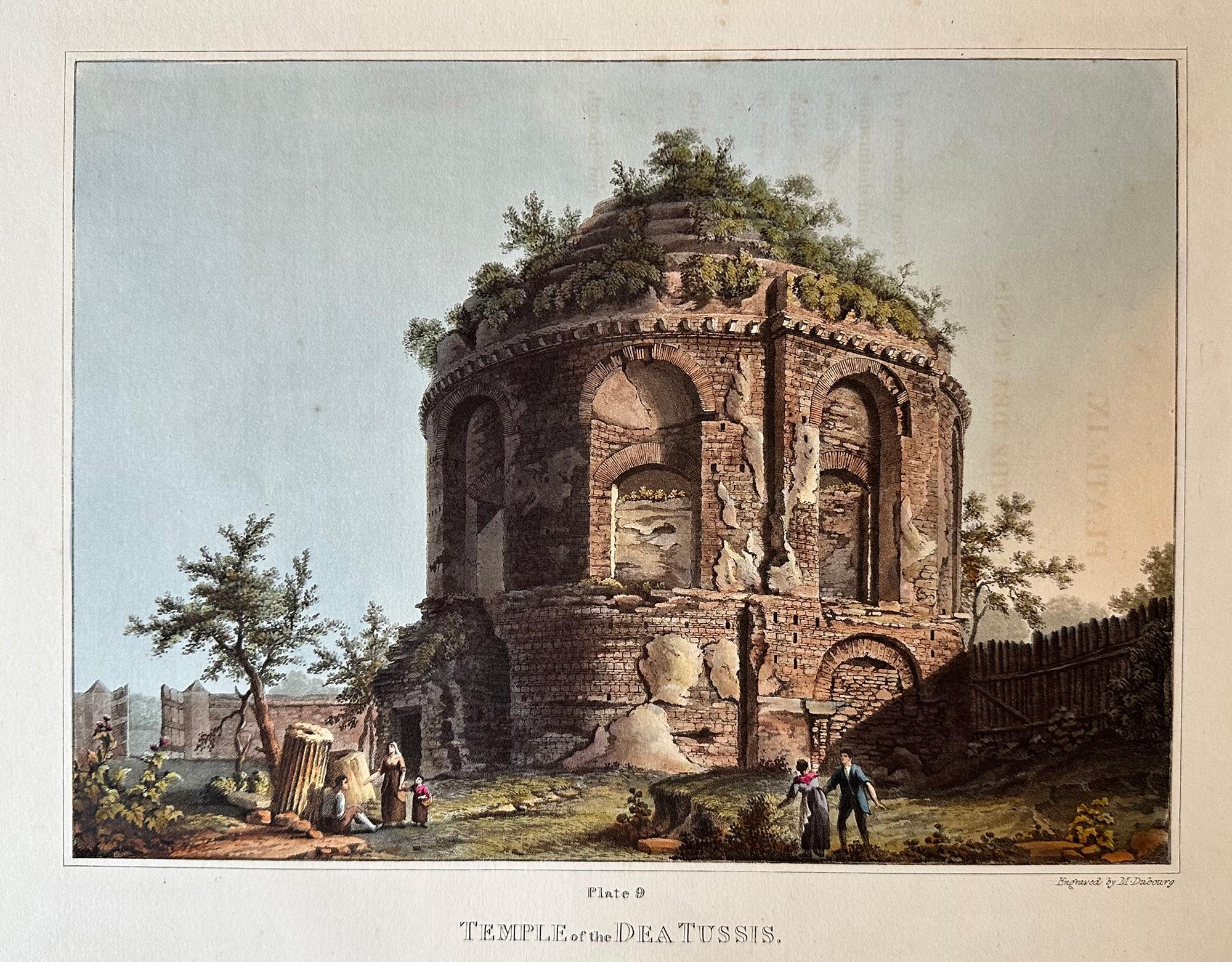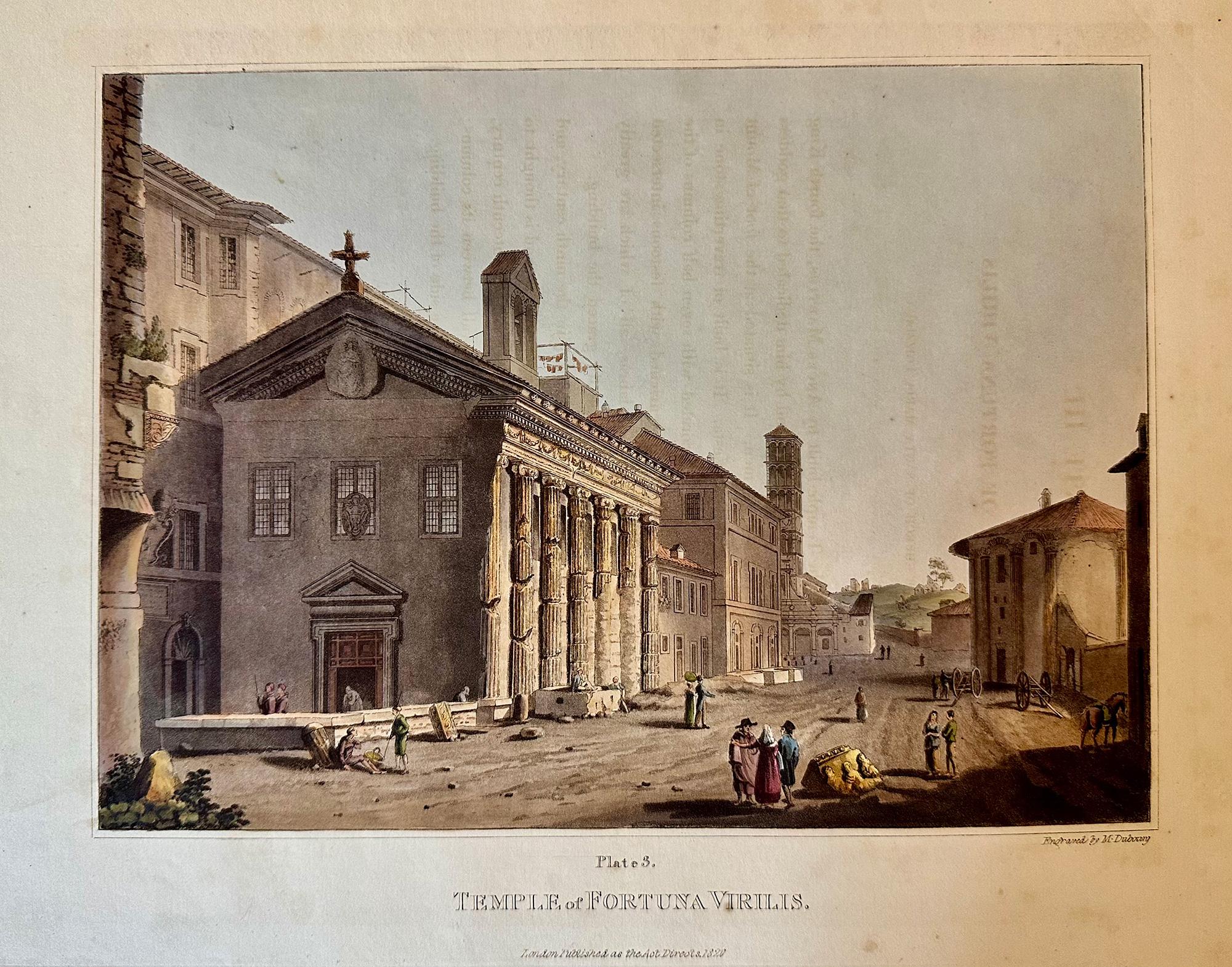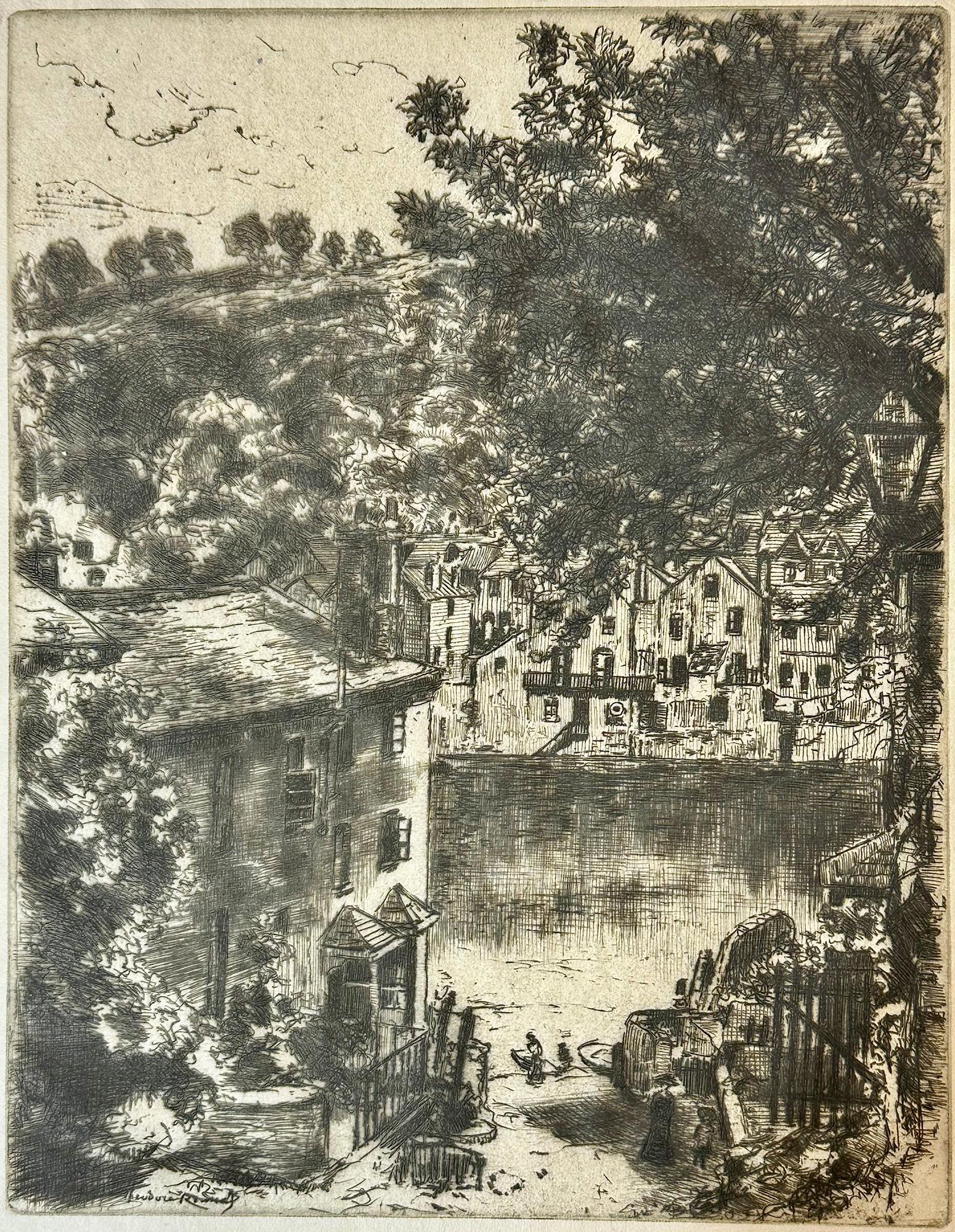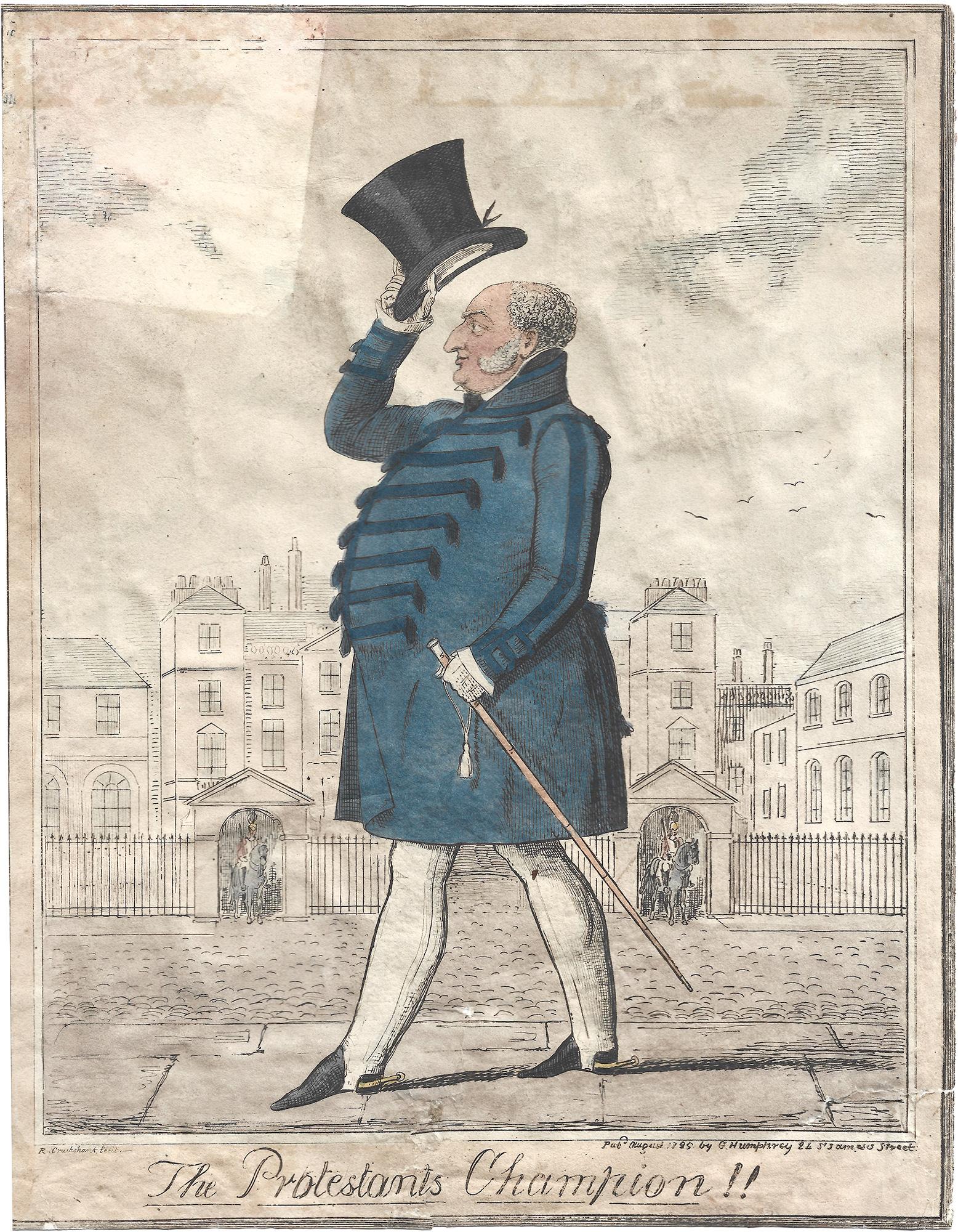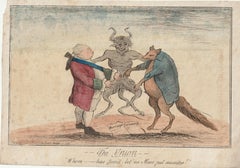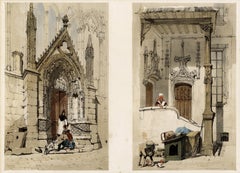
Frederic Lord Leighton (After), The Last Watch Of Hero, Gravure
View Similar Items
Want more images or videos?
Request additional images or videos from the seller
1 of 12
Frederic Lord Leighton (After), The Last Watch Of Hero, Gravurec. 1897
c. 1897
About the Item
- Creation Year:c. 1897
- Dimensions:Height: 40.5 in (102.87 cm)Width: 30 in (76.2 cm)
- Medium:
- Movement & Style:
- After:Frederic Leighton (1830 - 1896, British)
- Period:
- Condition:Artwork presents well. Frame with some light wear.
- Gallery Location:Cheltenham, GB
- Reference Number:1stDibs: LU2328211649222
About the Seller
5.0
Platinum Seller
These expertly vetted sellers are 1stDibs' most experienced sellers and are rated highest by our customers.
Established in 2017
1stDibs seller since 2023
130 sales on 1stDibs
More From This SellerView All
- 19th-Century Fashion Advertising, Our Styles For The Present Season, LithographLocated in Cheltenham, GBThis charming late 19th-century lithograph was produced by Freudenthal & Co for clothing manufacturers, TJ Thomas & Ellis Jones, to showcase the latest fashion. There are 17 styles including the DB Gladstone (after the Prime Minister), Ulster, Demi Sac, Tourist Blouse, Frock Coat and D B Prince Alfred. There’s also a Riding Habit for the lady. TJ Thomas & Ellis Jones were based at 138 Queen Victoria Street...Category
19th Century English School Figurative Prints
MaterialsPaper, Lithograph
- 18th-Century Engraving, Ancient English DressesLocated in Cheltenham, GBThis late 18th-century engraving from Thomas Bankes’ ‘New and Authentic System of Universal Geography’ depicts the evolution of ladies' fashion between 1590 and 1630. In this unusua...Category
18th Century English School Figurative Prints
MaterialsPaper, Engraving
- George Sidney Hunt After Edwin Long RA, In the Wilderness, EngravingLocated in Cheltenham, GBThis late 19th-century mixed-method engraving by George Sidney Hunt (1856-1917) after Edwin Long RA (1829-1891) is one in a series of three depicting the Old Testament story of Jephthah. Here, we see Jephthah’s daughter contemplating her fate during a two-month sojourn in the wilderness. The heart-rending story of Jephthah captured Victorian minds and inspired artist Edwin Long to produce three exhibition pieces, which are now held at the Russell Cotes Art Gallery & Museum. Prior to a fearsome battle with the Ammonites, Jephthah, a leader in Isreal, committed a vow to God that he’d make a sacrifice if his armies were triumphant. “whatever comes out of the door of my house to meet me when I return in triumph from the Ammonites will be the Lord’s, and I will sacrifice it as a burnt offering...Category
19th Century Academic Figurative Prints
MaterialsPaper, Engraving
- Axel Wallert, Seated Woman With Mandolin, EtchingLocated in Cheltenham, GBThis exquisite early 20th-century etching by Swedish artist Axel Wallert (1890-1962) depicts a seated woman playing the mandolin. It’s brimming with style yet captured with sensitivi...Category
1910s Post-Impressionist Figurative Prints
MaterialsPaper, Etching
- Albert Kruger After Max Liebermann, The Flax Barn at Laren, EtchingLocated in Cheltenham, GBThis late-19th-century etching by German draughtsman Albert Kruger (b. 1858) is after a painting by Max Liebermann (1847-1935). The rhythmical monotony of the spinners, organised like a rigid machine, echoes through the low barn. Youths, hunched by square windows, wind flax onto spindles. While women stand in clogged feet, working tirelessly with aching bones. Liebermann captured their daily grind with aplomb, avoiding sentiment in favour of laborious reality. Yet, amid this harsh environment, he celebrates their efforts. The composition conveys determination with its lines and strong verticals while the atmosphere is one of steel rather than tortuous circumstance. Liebermann was a realist yet he found light among the ordinary. Originally published in The Art Journal...Category
1890s Victorian Interior Prints
MaterialsEtching, Paper
- Walter Hancock’s Enterprise Steam Omnibus, 19th-Century Hand-Coloured LithographLocated in Cheltenham, GBThis charming mid-19th-century hand-coloured lithograph depicts the ‘Enterprise Steam Omnibus’, the most successful steam carriage of its period. In the early 19th century, long-distance travel was predominantly undertaken by horse-drawn carriages. Yet, every so often, the clitter-clatter of hooves was abruptly overshadowed by the whir of steam-powered technology. From around 1801, several plucky inventors began developing carriages which could propel themselves via steam. The majority were notoriously unreliable, often breaking down, too slow to be practical, and occasionally exploding. The first steam-powered carriage, invented by Richard Trevithick of Cornwall, made its debut in 1801. It was known as ‘The Puffing Devil’ or ‘Captain Dick’s Puffer’ and said to cause quite a fright when trundling towards you. But this, like several others, couldn’t sustain the rigours of regular long distance trips, which were required to support the cost of running them. Walter Hancock’s (1799-1852) carriages were different. They became the first to run regularly - initially from Stratford and London via the ‘Infant’, a ten-seater bus, and in 1833, between London Wall and Paddington via ‘The Enterprise’, which we see here. Hancock’s machines were revolutionary due to his patented steam boiler (which had less risk of exploding). The Enterprise also had a pioneering suspended engine along with several other clever additions. Driving it was a tricky affair with three operators required - one to steer and control the speed, a second to monitor the boiler’s water level, and a third to maintain the fire. It’s unclear how the three communicated over the omnipresent din. In total, Hancock’s machines carried 12,761 passengers across 4,200 miles, an incredible achievement given the constraints of the day and the condition of the roads. The Enterprise was lauded in Europe and the US, with this particular image featuring in the New York press. The lithograph is based upon an earlier engraving...Category
Mid-19th Century English School More Prints
MaterialsPaper, Lithograph
You May Also Like
- The Twin Rocks of Capri; I Faraglioni a CapriLocated in Middletown, NYLondon: Gebbie & Husson Co., 1879 Héliogravure and engraving on cream wove paper, 10 1/4 x 12 1/4 inches (258 x 310 mm), full margins. In good condition with some very minor margina...Category
Late 19th Century English School Landscape Prints
MaterialsPhotogravure, Engraving
- Union - Whom --- Has Join'd, Let No Man put Asunder!Located in Middletown, NYEtching and engraving with hand coloring in watercolor on cream laid paper. 6 3/4 X 9 5/8 inches (170 x 244 mm), margins trimmed, image intact. Rubbing in the lower left image area obscuring the publishing information (which reads Published by Mm. Darchery, St. James Street March 11, 1783), scattered light foxing, corner loss, top left corner, well outside of image area. "SMP" collector's stamp in red ink on the verso (not in Lugt), and the name "Renier" and the initials "AR" in black ink on the verso. Colors are extremely fresh. Impressions of this work may be found in the permanent collection of the British Museum, and the Yale Center for British Art. Ex-Collection of Anne & Ferdinand Gabriel (F.G.) Renier, reknowned for their inspriational collection of children's books and works on paper, now housed in the Victoria & Albert Museum. _____ The devil officiates at the wedding of Tory Lord North, and Charles James Fox, the Whig statesman whose career spanned almost four decades in Parliament. The satirical scene is the signing of the Fox-North coalition, which was a short-lived partnership the two formed while combining forces in the House of Commons to oust then Prime Minister William Petty, Earl of Shelburne. Fox had fallen out of favor with the Irish born Shelburne, also a Whig, whose ministry remained in power just long enough to see the American War of Independence...Category
Late 18th Century English School Figurative Prints
MaterialsWatercolor, Handmade Paper, Laid Paper, Etching
- PARIS: Porte Rouge Notre Dame & Rue des MarmousetsBy Thomas Shotter BoysLocated in Middletown, NYLithograph in colors with engraving on buff wove paper. Each of the two images measures 10 3/4 x 6 5/8 inches (271 x 167 mm), with the sheet measuring 14 1/4 x 20 1/2 inches (360 x 5...Category
Mid-19th Century English School Landscape Prints
MaterialsHandmade Paper, Lithograph
- Byloke, Ghent; From Picturesque Architecture in Paris, Ghent, Antwerp, Rouen...By Thomas Shotter BoysLocated in Middletown, NYAquatint with hand coloring in oil color on smooth wove paper, 10 1/2 x 14 5/8 inches (266 × 370 mm), full margins. Moderate mat tone, scattered spots of light brown discoloration in...Category
1830s English School Landscape Prints
MaterialsOil, Handmade Paper, Aquatint
- Rue de Marmousets, Paris; From Picturesque Architecture in Paris, Ghent, ....By Thomas Shotter BoysLocated in Middletown, NYAquatint with hand coloring in oil color on smooth wove paper, 10 5/8 x 7 3/8 inches (270 x 187 mm), full margins. Laid down to a support, as issued. Moderate toning and surface soil...Category
1830s English School Figurative Prints
MaterialsOil, Handmade Paper, Aquatint
- College of Physicians, from Ackermann's "Microcosm of London."By Thomas RowlandsonLocated in Middletown, NYPugin, Augustus Charles & Rowlandson, Thomas (after). College of Physicians, from Ackermann's "Microcosm of London." London: Rudolph Ackermann, 1808. Hand-colored lithograph, 9 1/4 ...Category
Early 19th Century English School Interior Prints
MaterialsWatercolor, Handmade Paper, Lithograph
Recently Viewed
View AllMore Ways To Browse
English Print Set
Set Of Prints Classical
Print Gravures
English Country Estate
Cross Watch
Antiquity Water
Crossed Fingers
Antique Watch Collections
Greek Prints Set
Sets Of Framed English Prints
C Lay
Set Victorian Prints
Canadian Watch
Watches Canada
Antique Watch Images
Used Watch Canada
Antique Watch Winder
Wind Antique Watch

